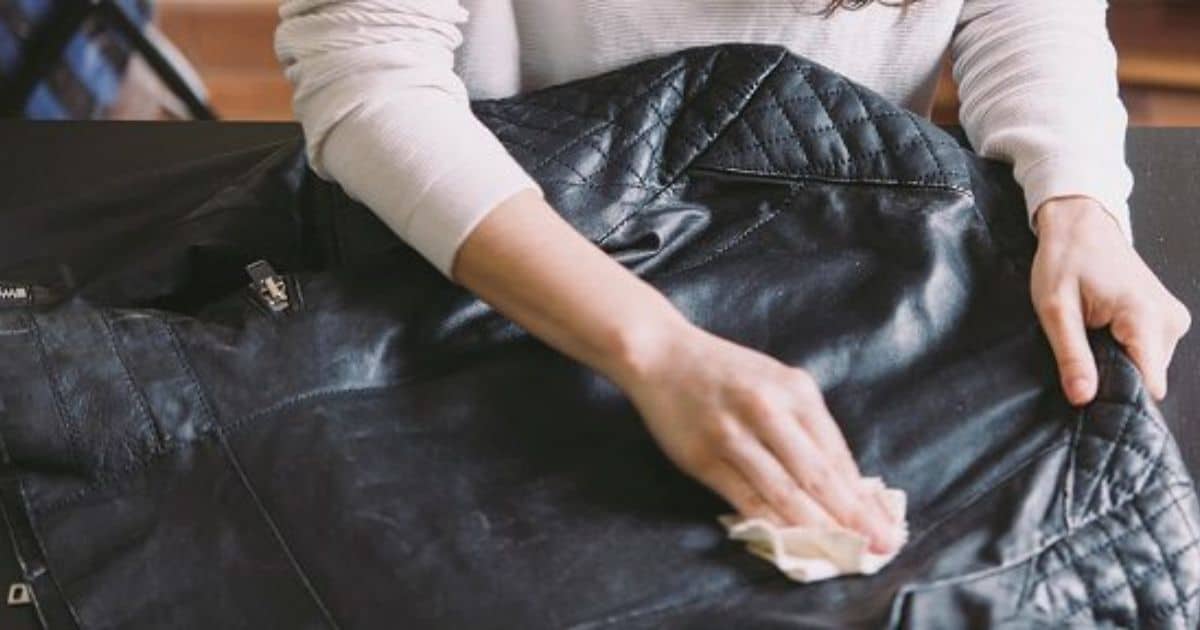In a world where style and durability are paramount, faux leather sofas have emerged as a popular choice for homeowners seeking both elegance and practicality. With their sleek appearance and affordability, these sofas have become a staple in many households. However, understanding the lifespan of faux leather sofas is crucial in making an informed purchase decision. This article delves into the various factors that affect the longevity of faux leather sofas, providing valuable insights and expert tips to help you make the most of your investment.
Key Takeaways
- Proper care and maintenance, including regular cleaning and conditioning, are crucial for extending the lifespan of faux leather sofas.
- Fading of color is a common issue caused by direct sunlight or harsh lighting conditions, so it’s important to protect the sofa from sunlight and use window treatments.
- The durability and quality of the faux leather material impact the lifespan of faux leather sofas, with higher quality materials tending to have a longer lifespan.
- Genuine leather sofas generally have a longer lifespan compared to faux leather sofas, but they are also more expensive.
Factors Affecting the Lifespan of Faux Leather Sofas

One of the key factors affecting the lifespan of faux leather sofas is the owner’s proper care and maintenance. Faux leather, although durable, is not as resilient as genuine leather and requires regular attention to maintain its quality. One significant issue that can affect the longevity of faux leather sofas is the fading of color.
This is particularly common when exposed to direct sunlight or harsh lighting conditions. These environmental factors can cause the pigments in the faux leather to break down over time, resulting in a faded appearance. To mitigate this, it is advisable to place faux leather sofas away from direct sunlight or use window treatments to block UV rays. Regular cleaning and conditioning of the material can also help prevent fading and maintain the color of the sofa for a longer period.
Quality of Faux Leather Materials
How does the quality of faux leather materials impact the lifespan of faux leather sofas? The durability and quality of the faux leather used in sofas play a significant role in determining their lifespan. High-quality faux leather materials are designed to withstand everyday use and are more resistant to wear and tear. On the other hand, low-quality faux leather may deteriorate quickly, leading to cracks, peeling, or discoloration. To understand the impact of faux leather quality on sofa lifespan, consider the following table:
| Faux Leather Quality | Lifespan |
|---|---|
| High Quality | Longer |
| Medium Quality | Average |
| Low Quality | Shorter |
As seen in the table, higher quality faux leather tends to have a longer lifespan, while lower quality materials may result in a shorter lifespan for faux leather sofas. Taking into account the quality of faux leather materials is essential for those looking for a long-lasting sofa. Now let’s move on to the next section, which focuses on maintenance and cleaning tips for faux leather sofas.
Maintenance and Cleaning Tips for Faux Leather Sofas

Proper maintenance and regular cleaning are essential for preserving the appearance and prolonging the lifespan of faux leather sofas. Faux leather is a durable material, but it still requires attention to keep it looking its best. Here are some tips for maintaining and cleaning your faux leather sofa:
- Regularly dust and vacuum your sofa to remove any loose dirt or debris.
- Wipe down your sofa with a damp cloth or sponge to remove stains or spills.
- Avoid using harsh chemicals or abrasive cleaners, as they can damage the faux leather.
- Use a mild soap or leather cleaner specifically designed for faux leather to gently clean the surface.
- Apply a leather conditioner or moisturizer to keep the faux leather soft and supple.
Typical Lifespan of Faux Leather Sofas
When considering the typical lifespan of faux leather sofas, it is important to take into account several factors that can affect their durability and longevity. These factors include the quality of the faux leather material, the construction of the sofa, and the level of maintenance and care provided. It is also worth comparing the lifespan of faux leather sofas to that of genuine leather sofas, as the latter tends to have a longer lifespan due to its natural properties.
Factors Affecting Lifespan
The durability of faux leather sofas is influenced by various factors that can significantly impact their typical lifespan. Some of the key factors that affect the lifespan of faux leather sofas include:
- Quality of the faux leather material: Higher quality faux leather alternatives tend to be more durable and long-lasting.
- Construction and frame quality: The strength and stability of the sofa’s frame can affect how well it holds up over time.
- Usage and maintenance: How the sofa is used and maintained can also impact its lifespan. Regular cleaning and proper care can help extend its longevity.
- Exposure to sunlight and heat: Excessive exposure to sunlight and heat can cause the faux leather material to fade, crack, or become brittle.
- Overall product quality: The overall quality of the sofa, including the stitching, cushions, and other components, can also impact its lifespan.
Understanding these durability factors is essential in making an informed decision when purchasing a faux leather sofa. Proper maintenance and care, which will be discussed in the subsequent section, are also crucial in ensuring its longevity.
Maintenance and Care
Regular cleaning and proper care are essential for maximizing the typical lifespan of faux leather sofas. To maintain the appearance and durability of your faux leather sofa, it is important to follow specific maintenance techniques. Firstly, wipe down your sofa regularly with a soft, damp cloth to remove dust and dirt.
Avoid using harsh chemicals or abrasive cleaners, as they can damage the faux leather material. Additionally, it is crucial to address common faux leather sofa problems promptly. For example, if you notice any scratches or tears, repair them using a faux leather repair kit. By taking these maintenance steps, you can extend the lifespan of your faux leather sofa and keep it looking its best for years to come. Now, let’s delve into comparing faux leather sofas to genuine leather.
Comparing to Genuine Leather
A key aspect to consider when comparing faux leather sofas to genuine leather is their respective typical lifespans. While genuine leather sofas are known for their durability and can last for decades with proper care, faux leather sofas have a relatively shorter lifespan. Here are some points to consider when comparing durability and cost effectiveness between the two options:
- Faux leather sofas are generally less expensive than genuine leather sofas, making them a more cost-effective choice for those on a budget.
- Genuine leather sofas have a longer lifespan and can withstand wear and tear better than faux leather sofas.
- Faux leather sofas may start to peel or crack over time, especially with frequent use or exposure to sunlight.
- Genuine leather sofas can be more resistant to stains and spills, making them easier to clean and maintain.
- Investing in a high-quality genuine leather sofa can provide long-term durability and value.
How to Identify Signs of Wear and Tear in Faux Leather Sofas?

One must carefully observe for any noticeable indications of wear and tear in faux leather sofas. Faux leather, although durable, is not impervious to damage. Over time, signs of wear may become evident, such as cracks, peeling, or fading. To identify damage, inspect the surface of the sofa for any visible tears or scratches.
Pay attention to areas that receive the most use, such as the seat cushions or armrests. Additionally, check for any discoloration or changes in texture, as these can also be signs of wear. If tears are found, they should be repaired promptly to prevent further damage. This can be done by using a leather repair kit or seeking professional assistance. Regular maintenance, such as cleaning and conditioning, can also help prolong the lifespan of faux leather sofas.
Ways to Extend the Lifespan of Your Faux Leather Sofa
To effectively maximize the longevity of your faux leather sofa, implementing proper care and regular maintenance are essential. Faux leather, although durable, requires attention to ensure it remains in pristine condition for an extended period. Here are some ways to extend the lifespan of your faux leather sofa:
- Clean regularly: Dust and debris can cause scratches and damage the surface. Regularly dusting and wiping your sofa with a soft cloth can prevent these issues.
- Avoid direct sunlight: Prolonged exposure to sunlight can cause the material to fade and crack. Keep your sofa away from windows or use curtains or blinds to block the sun’s rays.
- Use a conditioner: Applying a faux leather conditioner can help prevent cracking and keep the material supple.
- Clean spills promptly: Accidental spills are inevitable, but quick action can prevent stains from setting in. Blot the spill gently with a clean cloth and avoid rubbing to avoid spreading the stain.
- Test cleaning products: Before using any cleaning product on your faux leather sofa, test it on a small, inconspicuous area to ensure it doesn’t damage or discolor the material.
Frequently Asked Questions
Can I Use Regular Leather Care Products on a Faux Leather Sofa?
Regular leather care products should not be used on a faux leather sofa, as it can damage the material. Instead, alternative cleaning and care methods specifically designed for faux leather should be used to maintain the longevity and appearance of the sofa.
What Are Some Common Signs of Wear and Tear in Faux Leather Sofas?
Common signs of wear and tear in faux leather sofas include cracking, peeling, and discoloration. To prevent such damage, it is advisable to avoid direct sunlight, excessive heat, and sharp objects. Regular cleaning and conditioning can also extend the lifespan of faux leather sofas.
Can I Repair Small Tears or Scratches on a Faux Leather Sofa?
When it comes to repairing tears or scratches on a faux leather sofa, it is possible to fix small damages with the right tools and techniques. This can help prevent further damage and extend the lifespan of the sofa.
How Often Should I Clean and Condition My Faux Leather Sofa?
To properly clean and condition faux leather sofas, it is recommended to follow a regular maintenance routine. This includes wiping down the surface with a damp cloth, using a mild soap solution for stains, and applying a leather conditioner to keep the material supple and prevent cracking.
Are There Any Specific Precautions I Should Take to Protect My Faux Leather Sofa From Damage?
To protect your faux leather sofa from damage, it is important to take certain precautions. Implementing protective measures such as using furniture covers, avoiding direct sunlight, and regularly cleaning and conditioning can significantly extend its lifespan.
Conclusion
Faux leather sofas offer an attractive blend of style and affordability, making them a popular choice for homeowners. However, their lifespan depends on various factors, including proper care, the quality of materials, and exposure to environmental conditions. By following recommended maintenance practices and being mindful of their limitations, you can ensure that your faux leather sofa remains a durable and stylish addition to your home for years to come. While genuine leather sofas may have a longer lifespan, faux leather sofas can provide a cost-effective and elegant alternative for those looking to balance both aesthetics and practicality in their furniture choices.








